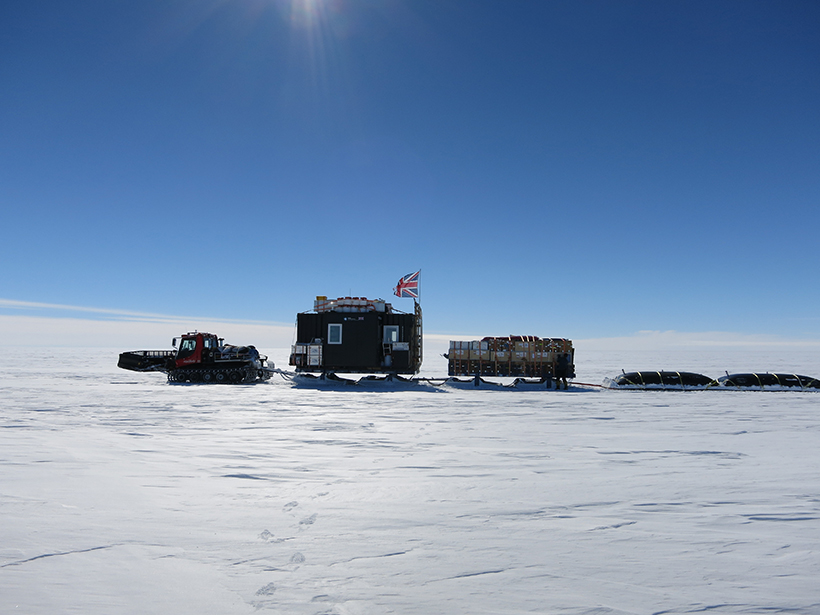West Antarctica’s Pine Island Glacier now makes the biggest single contribution to sea level rise.
The future of Earth’s large ice sheets in Antarctica and Greenland represents the greatest uncertainty in predictions of sea level. The behavior of the West Antarctic Ice Sheet, in particular, is difficult to predict. Of all glaciers worldwide, West Antarctica’s Pine Island Glacier now makes the biggest single contribution to sea level rise. This glacier’s unusually large contribution has been driven by changes in the Amundsen Sea, which increasingly have brought warm ocean waters into contact with floating ice.
The United Kindom’s Natural Environment Research Council (NERC) Ice Sheet Stability Research Programme (iSTAR) is an effort to improve understanding of West Antarctica’s combined Pine Island Glacier–Amundsen Sea system. The iSTAR Programme formally ended this year, and in May, delegates gathered at the University of Leeds to review its contribution.
The meeting’s goal was a synthesis of iSTAR’s combined achievements and an assessment of these achievements against the program’s original objectives: understanding the transport of ocean heat toward the ice sheet, understanding the sub-ice processes affecting ice melt, and understanding the response of the inland glacier to the ocean-induced changes.
Two clear significant messages came out of the talks and extended discussions. First, future research in this field should include atmospheric processes, not just ice and ocean processes. Overall, water transport is driven by the ocean’s density structure. However, the way that warm water’s contribution to melting ice varies over time is controlled by atmospheric forcing (particularly wind patterns) at scales both local (100 kilometers) and synoptic (1,000 kilometers).
Numerical models of Pine Island Glacier are now limited—not by their own resolution and abilities, but by the paucity of essential observations.
Second, the value of long time series observations has proved critical. Many talks demonstrated that Amundsen Sea records have been collected for a long enough period to show that ice sheet changes are an accumulated response to a sequence of oceanographic and meteorological events over recent decades, rather than simply a response to long-term trends. Presenters emphasized the exceptional value of long-term moorings in the Amundsen Sea. Meeting participants agreed unanimously that continuation of these time series efforts should be a high priority in the future.
Several talks demonstrated that numerical models of Pine Island Glacier are now limited—not by their own resolution and abilities, but by the paucity of essential observations, in particular ice sheet thickness in the critical region where the ice goes afloat. More observations are needed in that region before models can reliably predict this glacier’s future behavior.

The meeting included discussion of the new “tractor traverse” capability, in which tracked snow vehicles transport large equipment and portable living quarters across the ice. The program used this new capability in its ice sheet data acquisition efforts. The wide range and high quality of the ice sheet data included at the meeting showed how successful this had been. Now proven, this capability can support further ice sheet research across a range of geoscience disciplines, including glaciology, geophysics, geology, paleoclimate, and atmospheric observations.
The meeting was supported by NERC; the iSTAR program, which is funded by NERC, has research collaborations with the United States, South Korea, and Germany. Karen Heywood, Adrian Jenkins, David Vaughan, Andy Shepherd, and Keith Nicholls helped improve the quality of the manuscript.
—A. M. Smith (email: [email protected]), British Antarctic Survey, Cambridge, U.K.
Citation:
Smith, A. M. (2017), Pine Island Glacier and ice sheet stability in West Antarctica, Eos, 98, https://doi.org/10.1029/2017EO086471. Published on 15 November 2017.
Text © 2017. The authors. CC BY 3.0
Except where otherwise noted, images are subject to copyright. Any reuse without express permission from the copyright owner is prohibited.

